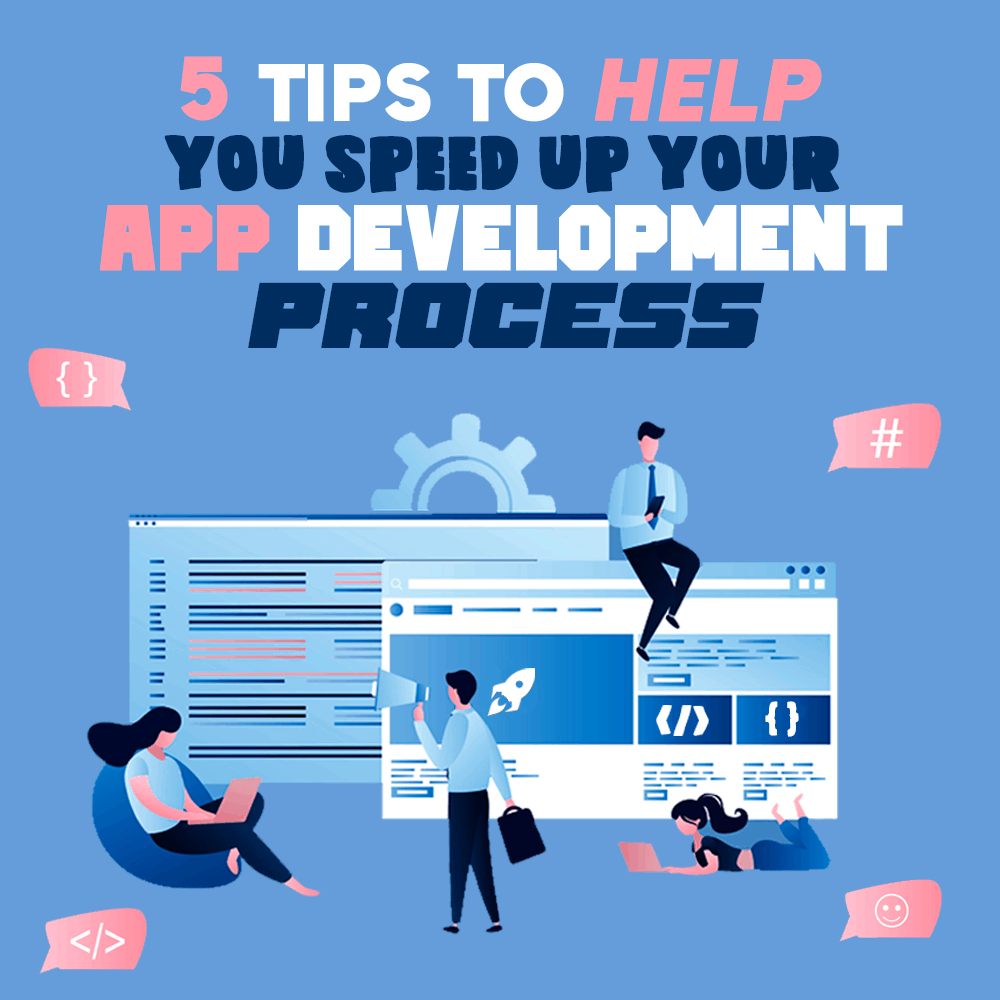
Whilst speed is undoubtedly important, setting short project delivery deadlines isn't the be-all and end-all of successful app development. Since nobody will judge the quality of the final product based on the amount of time you’ve put into it, the pursuit of ridiculously short deadlines is not the altar at which you want to offer up your health and happiness.
The truth is that quality-driven software development is expected to be slow, albeit not painfully so. And that’s where this article can help you. In it you’ll find several tips and suggestions that when followed, can substantially speed up your app development process, saving you time and, ultimately, your sanity too.
Use Project Management Software
Whatever combination of cautious optimism and reckless courage you are bringing into a project, you are more likely to see it to completion after introducing project management software into the equation.
To spare yourself unnecessary frustration, start using project management software as soon as possible, if not at the ideation stage then at least at the planning stage. During the app development process, all team members juggle so many different tasks, goals, and communications at once that it can bring chaos and confusion to any product creation.
Project management software helps with planning and scheduling, and it can kick the app development process into overdrive by allowing you to categorize complex tasks, facilitate team collaboration, and enable effective time tracking.
Streamline Your Workflow
Once you’ve set your sights on the project and adopted suitable software for its management, it’s time to streamline your workflow.
Generally speaking, a streamlined workflow would include the following seven steps:
- Analyzing and visualizing your app development workflow
- Breaking down and grouping the key processes
- Ranking all processes to prioritize them better
- Eliminating needless complexity
- Developing and testing a new app development workflow
- Introducing adjustments to the workflow after a test run
- Adopting the new workflow and refining it religiously
In more detail, to ensure that you are not moving ahead haphazardly by constantly rerouting your team resources toward shifting priorities, carefully analyze your approach to web development. Something as simple as a flowchart would do.
Afterward, the idea is to break down the key processes, grouping them together and ranking them in order to better prioritize them. This allows you to detect needless complexity or development inhibitors and eliminate them from your workflow. Close collaboration with team members and stakeholders could help here tremendously.
After dispensing with superfluous processes, lay out a new, streamlined workflow. Using something as simple as a diagram maker, lay out the new workflow. Upon workflow implementation, test it, measuring lead time, cycle time, velocity, and other key metrics.
Make sure to follow the new workflow’s test run with the introduction of adjustments. Collect feedback from your team to understand the areas for improvement. It has to be borne in mind that the operational adoption of the new workflow is not a grounds for complacency. Refine it perpetually.
Set Your Optimal Speed
Your app development process can be hampered not only by a slow execution but also by an unreasonably fast one. How come? You see, when your team is too rushed for too long, not everyone will make it to the finish line, including the app itself.
To avoid overexertion, set an optimal speed to suit your team. Some can withstand an extreme sprint of 12 hours per day, while others can function fairly well under a moderate sprint of 8-10 hours per day. But you also get teams that opt for a 6-8-hours-per-day marathon lasting for years and squeezing every drop of productivity from everyone involved.
Whatever mode you choose, ensure your team is comfortable with it.
Invest in Training
At the risk of stating the extremely obvious, code smarter, not harder. And who can code smarter than programmers who regularly hone their skills and deliberate with other experts at professional conferences and learning events?
Let’s face it, among the multiple constraints to a seamless app development process, the cognitive bandwidth of your team is the chief limiting factor. Fortunately, it can be expanded.
To help your team members better understand their respective domains, offer them not only ample opportunities for learning but also enough time to pursue them. Sure, it might slow down your app development project initially; but in the long run, it will be worth it.
Get the Right Tools
Programmers can do wonders with the right tools at their disposal. For a sustainable productivity boost, let your team members test development and deployment environments before you adopt them.
Furthermore, consider the tool usage throughout the app lifecycle carefully to ensure it can meet your needs without overwhelming you with the total cost of ownership. In the same vein, consider scalability to accommodate the app’s growing user base.
To ensure that your app development process is not derailed by cybersecurity threats, protect your network with professional security software. Endpoint protection is equally important; therefore, don’t neglect either PC or Mac security.
Faster Isn’t Necessarily Better
When seeking to launch your app faster, you don’t necessarily have to pay tribute to the gunslingers of yore by drawing fast and shooting from the hip. Cleaning up the mess from making hasty decisions isn’t something you want to deal with at the later stages of the app development process.
Instead, take deliberate steps forward within the general framework of the aforementioned advice. Your ultimate aim is to deliver quality outputs faster, without making costly and timely mistakes in the process.
